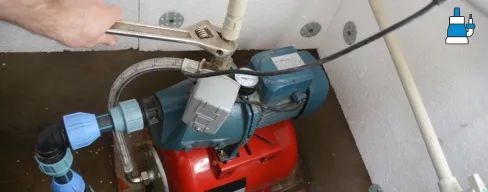Maintaining the integrity of your home’s plumbing system and general cleanliness depends on a functional bathtub drain. Water damage from malfunctioning drains may jeopardize your bathroom’s structural basis and need expensive repairs. Furthermore, standing water from a broken drain provides the ideal environment for the growth of mold and mildew, both of which are very dangerous to human health. A broken drain may also often result in plumbing problems including leaks and blockages, which can waste water and perhaps increase energy costs. By fixing a broken drain, you can minimize these issues and keep your bathroom functional and hygienic while ensuring that water exits your bathtub easily.
Knowing the Fundamentals
The function of a bathtub drain is to direct wastewater from the bathtub into the sewage system, making it a crucial part of your plumbing system. There are many kinds of bathtub drains, and each has a unique mechanism of its own:
Lift-and-Turn Drains: To open or shut a lift-and-turn drain, the user must turn a stopper. This kind, which is often seen in older houses, closes reliably.
Push-and-pull drains: To regulate the flow of water, just push or draw a stopper. This simple mechanism is often used in contemporary bathrooms and is easy to use.
Toe-Touch Drains: To elevate or lower the stopper on these models, all you need to do is use your toe. For those who want to use a hands-free alternative or have restricted movement, they are useful.
Comprehending these processes is essential for carrying out a replacement successfully, because every kind can call for distinct instruments and techniques.
Getting Ready
Assembling the Required Instruments and Supplies
Before starting to repair a bathtub drain, make sure you have the necessary equipment and supplies:
Drain Wrench: Required for both drain flange installation and removal.
Plumber’s putty is used to enclose the new drain assembly in a waterproof layer.
Make that the new drain assembly fits the dimensions of the old drain.
To remove the drain cover and other parts, use a screwdriver.
Pliers: To hold and rotate certain drain assembly components.
Cleaning Materials: must give the region a good cleaning before putting in the new drain.
The majority of hardware shops and home improvement stores sell these products. Speak with a shop representative to make sure you have everything you need for your particular drain type.
Safety Measures
When changing a bathtub drain, safety comes first. Recall to:
Cut Off the Water Supply: To avoid unintentional flooding when replacing.
Put on gloves to protect your hands from chemicals and jagged objects.
Make Sure There Is Enough Ventilation: To prevent breathing in dangerous fumes, adequate ventilation is essential when using powerful cleaning agents or chemicals.
Wearing protective eyewear and knee pads is advised to enhance comfort and avoid injuries, particularly while working in confined spaces.
Evaluating the Replacement Need
The following are indicators that your bathtub drain needs to be replaced:
Slow Drainage: The tub’s water takes a while to drain.
Water seeping from under the tub or from the drain area are examples of visible leaks.
Visible Damage: Corrosion or cracks in the drain’s parts.
Assessing the degree of these problems will enable you to determine whether a complete replacement is required or if a simple fix will do.
Methodical Replacement Procedure
Eliminating the Previous Drain
Take off the drain cover: To remove the drain cover, use a screwdriver or the proper tool.
Cut the Drain Flange Off: To release the flange, insert a drain wrench into the drain hole and spin counterclockwise.
Remove the previous drain assembly: From the drain aperture, carefully remove the old drain assembly.
Sanitizing the area around the drain
Make sure the area is completely clean to get rid of any dirt, soap scum, and old sealant before installing a new drain. To guarantee a spotless surface, scrub with a strong cleaning solution. This is an important step because it ensures that the new drain seals correctly and prevents further leaks.
Examining the Plumbing
Examine the exposed piping for leaks, damage, or corrosion after cleaning. It is important to address any faults found at this point in order to prevent future concerns that could interfere with the installation of the new drain. It might be a good idea to speak with a licensed plumber if you see any noticeable corrosion or damage.
Setting Up the New Drain
Choose a Fresh Drain: Make sure the replacement drain fits your bathtub’s requirements. This covers the drain’s dimensions and kind.
Put Plumber’s Putty to Use: To make a watertight seal, roll the putty into a thin rope and wrap it around the drain flange’s edge.
Put the New Drain in Place: After carefully inserting the new drain into the aperture, tighten it with a clockwise turn of the drain wrench.
Put on and Tighten the New Drain Cover: Make sure the cover is correctly positioned and firmly fastened.
Closing the New Drain and Testing It
To stop leaks, use the proper sealant to make a final seal around the newly installed drain. As directed by the manufacturer, allow it to set. After the bathtub is sealed, put water into it to make sure there is enough drainage and to look for leaks. In the event that problems occur, make sure the drain is properly aligned and securely shut. Reapply the sealant or make any required installation adjustments if issues continue.
By carefully following these instructions, you may replace your bathtub’s drain and improve your bathroom’s hygienic conditions as well as functioning. Making the proper effort now can save you further difficulties and repairs down the road.
Advanced Hints and Techniques
Selecting the Appropriate Drain Type
Pop-up, trip lever, and grid drains are among the several kinds of bathtub drains; each has pros and cons of its own. Although pop-up drains are simple to operate and maintain, wear and tear may sometimes cause them to malfunction. Installing trip lever drains might be more difficult, but they are more resilient and less prone to clog. Although grid drains have few moving components and are dependable, they may not be handy for those who want to easily fill the tub. Think about the material of the bathtub when choosing the ideal drain type. For example, lightweight drains are ideal for plastic or acrylic bathtubs, while stronger choices may be needed for cast iron or heavier bathtubs. Reputable and long-lasting companies such as Moen and Kohler are examples of high-quality drain choices.
Managing Typical Obstacles
There are a number of difficulties involved with replacing a bathtub drain, including removing old caulk and handling rusty parts. Extra leverage may be obtained by using a drain key or a clever dumbbell wrench on tough-to-remove drains. Rusted or corroded components may also be loosen with the use of penetrating oil. Make sure that every part is positioned correctly during installation to avoid leaks. To make a watertight seal, you may require plumber’s putty if the new drain doesn’t fit tightly.
How to Keep Your New Bathtub Drain Working
Maintain your new bathtub drain on a regular basis to prevent problems in the future. Using a drain brush or plumber’s snake, clean the drain on a regular basis to avoid the accumulation of hair and debris. Use drain covers to reduce obstructions and capture bigger particles. To ensure maximum functioning, periodically check for wear indicators like rust or cracks and take quick corrective action if necessary.
Expense Factors
Calculating Replacement Cost
The cost of replacing a bathtub drain includes components (the drain assembly itself), labor, and maybe even equipment like wrenches and plumber’s putty. Purchasing mid-range drain assemblies and getting equipment from a nearby hardware shop might help individuals on a limited budget save costs.
Homemade vs. Expert Replacement
Labor expenses might be reduced when replacing a drain yourself. Still, it takes time, the correct equipment, and a rudimentary understanding of plumbing. Gaining firsthand experience and enjoyment is a benefit, but there are drawbacks as well, such as possible issues like leaks or incorrect installation. Although it will cost more, hiring a professional guarantees a high-quality setup and saves time. If you are confident and have the necessary abilities, go ahead and DIY; if not, it is best to hire a professional plumber to ensure a flawless replacement.
Contact Details
Email: info@drainexpress.ca
Phone:
+1 647 247 0846
Our Location
300 New Toronto St #14,
Etobicoke, ON, M8V 2E8
24/h Customer Service
We are open 24/7
Contact us at any time

